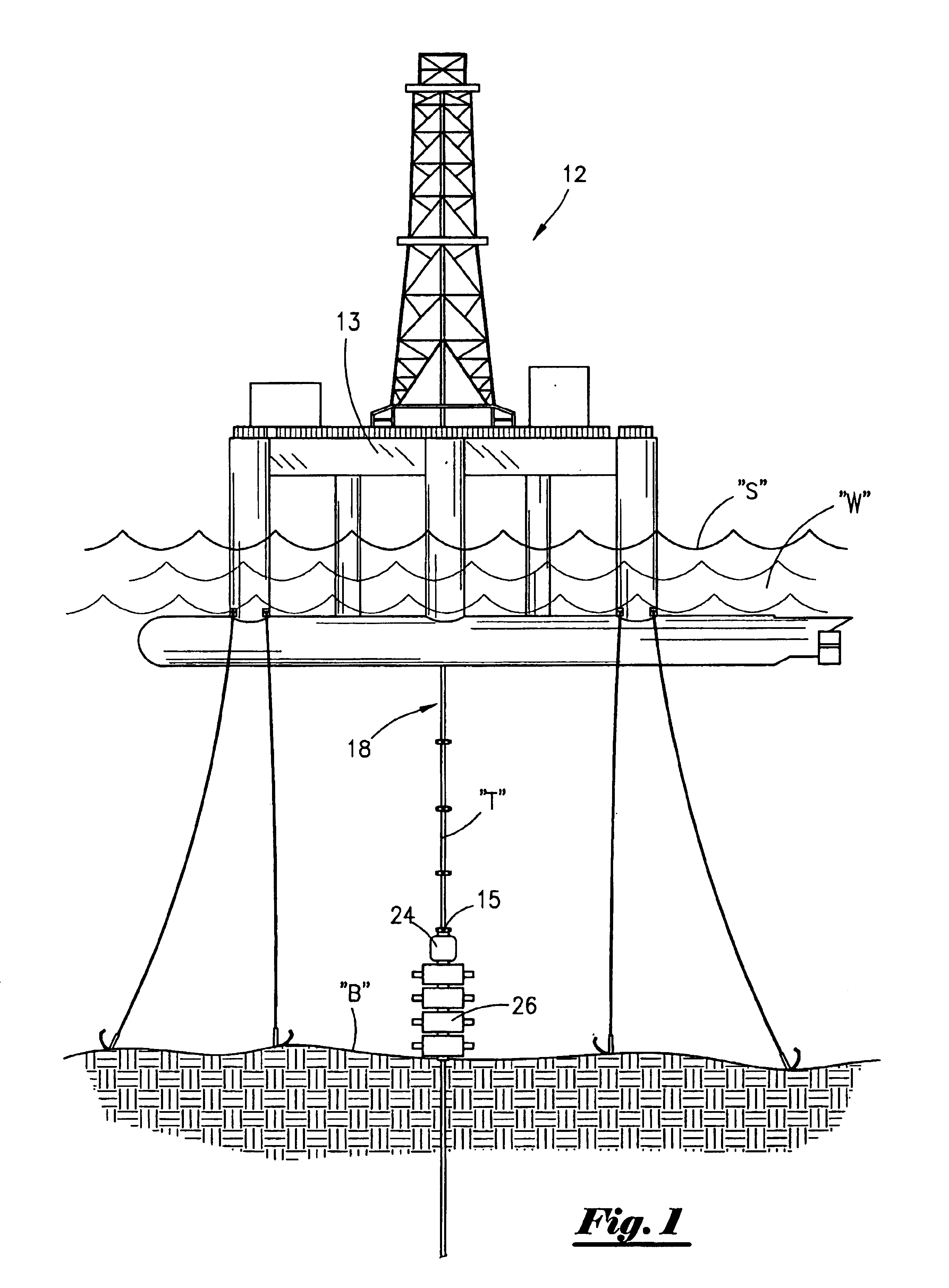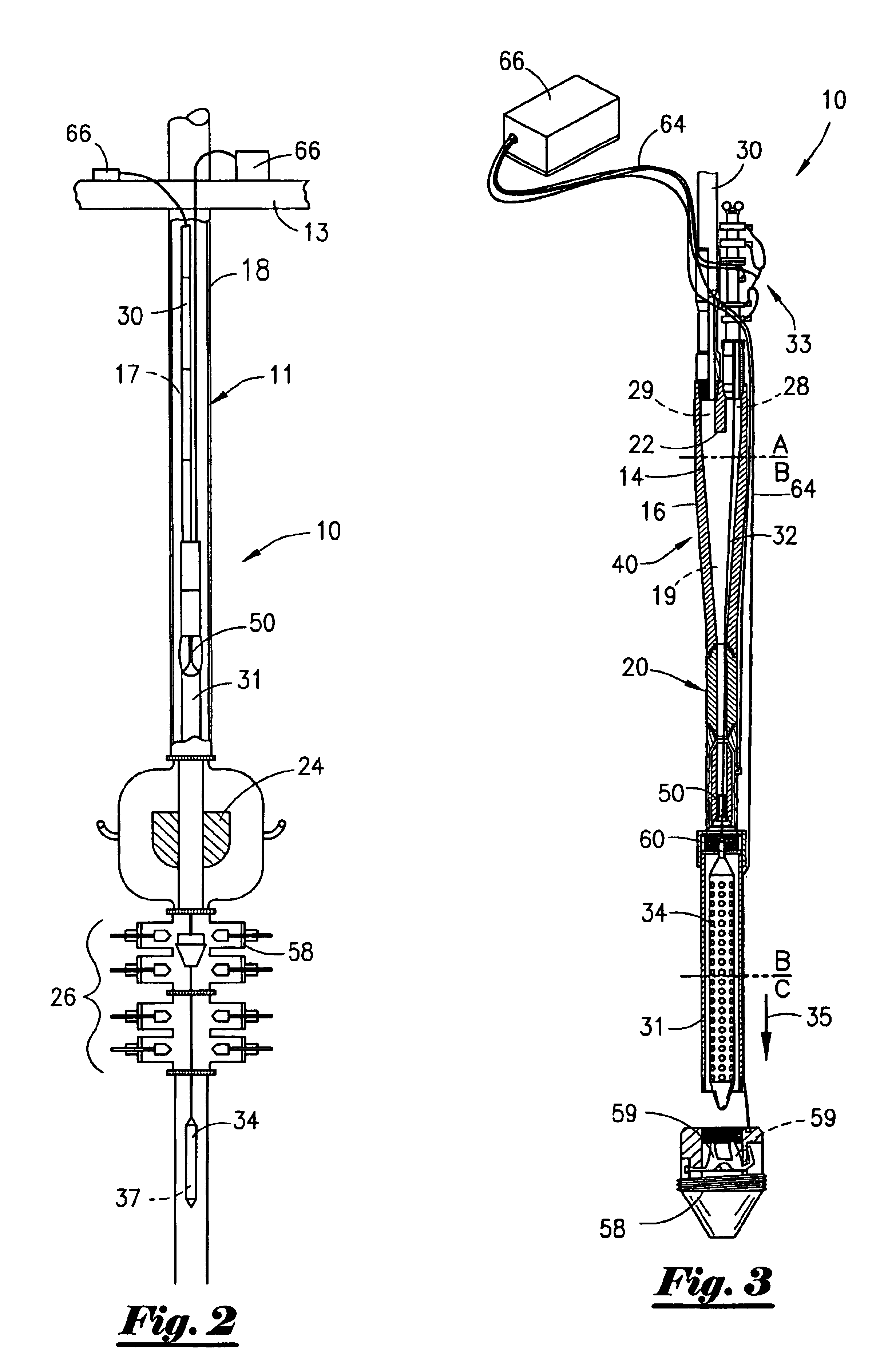Method and apparatus for controlling well pressure while undergoing subsea wireline operations
a wireline operation and well pressure technology, applied in the field of wireline operations, can solve the problems of unfavorable high-pressure line operation, system never being applied safely, and difficulty in controlling well pressure at deep depths, so as to save on the cost of casing rental, increase safety, and take up more room
- Summary
- Abstract
- Description
- Claims
- Application Information
AI Technical Summary
Benefits of technology
Problems solved by technology
Method used
Image
Examples
first embodiment
[0034]FIGS. 1-7 illustrate the system of the wireline subsea blowout preventer control head assembly (assembly) of the present invention. The assembly is illustrated by the numeral 10, as seen in FIGS. 2, 3 and 4A-4C. Prior to discussing assembly 10 in detail, reference is made to FIG. 1, where there is illustrated in cross section a typical rig 12 positioned on the surface S of a body of water W, such as the Gulf of Mexico. The rig would include an extended riser 18, comprising a plurality of tubular elements T, stacked and flanged with bolts to define the entire riser 18 extending from the rig floor 13, to the seabed B. For purposes of this discussion the rig 12 may be in water as deep as 10,000 feet, or even deeper, and the riser 18 would therefore be 10,000 feet in overall length. Such a riser is normally some 20 inches in diameter, but can only withstand internal pressures of around 2000 lbs. before the riser would rupture. This, of course, must be avoided since such a rupture ...
second embodiment
[0043]Referring now to FIGS. 8 through 13, a second embodiment, which is the preferred embodiment of this application, will now be discussed. As set out in FIG. 8, this second preferred embodiment utilizes a typical drilling rig and subsea components positioned within a deep water environment during exploration, drilling and completion operations. It should be noted that like numbers appearing in the various figures refer to like components. Thus, the rig 12 is positioned within a body of water W. The rig 12 has a rig floor 13 where a rotary table 102 is operatively contained thereon as is well understood by those of ordinary skill in the art. The rig 12 may be a drill ship or a semi-submersible rig, even though the invention herein disclosed is applicable to all types of rigs.
[0044]As seen in FIG. 8, a riser 18 extends from the rig floor 13 to the sea bed B. More particularly, the lower end 15 of the riser 18 is attached to the annular preventer 24, and extending from the annular p...
PUM
 Login to View More
Login to View More Abstract
Description
Claims
Application Information
 Login to View More
Login to View More - R&D
- Intellectual Property
- Life Sciences
- Materials
- Tech Scout
- Unparalleled Data Quality
- Higher Quality Content
- 60% Fewer Hallucinations
Browse by: Latest US Patents, China's latest patents, Technical Efficacy Thesaurus, Application Domain, Technology Topic, Popular Technical Reports.
© 2025 PatSnap. All rights reserved.Legal|Privacy policy|Modern Slavery Act Transparency Statement|Sitemap|About US| Contact US: help@patsnap.com



